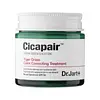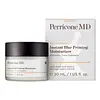What's inside
What's inside
 Key Ingredients
Key Ingredients

 Benefits
Benefits

 Concerns
Concerns

 Ingredients Side-by-side
Ingredients Side-by-side

Water
Skin ConditioningCentella Asiatica Leaf Water
Skin ConditioningIsononyl Isononanoate
EmollientCyclopentasiloxane
EmollientButylene Glycol
HumectantDimethicone
EmollientPhenyl Trimethicone
Skin ConditioningMethyl Methacrylate Crosspolymer
Beeswax
Emulsion StabilisingGlycerin
HumectantDiethylhexyl Carbonate
EmollientPolyglyceryl-3 Polyricinoleate
EmulsifyingNiacinamide
SmoothingPolymethylsilsesquioxane
Cyclohexasiloxane
EmollientPanthenol
Skin ConditioningDiglycerin
HumectantIron Oxides
Polyglyceryl-4 Diisostearate/Polyhydroxystearate/Sebacate
EmulsifyingIsododecane
EmollientEthylene/Methacrylate Copolymer
Cetearyl Alcohol
EmollientPolyglyceryl-2 Triisostearate
EmulsifyingAluminum Hydroxide
EmollientStearic Acid
CleansingDisteardimonium Hectorite
StabilisingAcrylates/Ammonium Methacrylate Copolymer
Sclerotium Gum
Emulsion StabilisingSodium Benzoate
MaskingAcrylates/Dimethicone Copolymer
Skin ConditioningHydrogen Dimethicone
Chromium Oxide Greens
Triethyl Citrate
MaskingPotassium Sorbate
PreservativeFragaria Vesca Leaf Extract
AstringentDisodium EDTA
BHT
AntioxidantAlcohol
AntimicrobialAsiaticoside
AntioxidantAdenosine
Skin ConditioningTriethoxycaprylylsilane
Lavandula Angustifolia Oil
MaskingBoron Nitride
AbsorbentAsiatic Acid
Skin ConditioningMadecassic Acid
Skin ConditioningCitrus Grandis Peel Oil
MaskingRosmarinus Officinalis Leaf Oil
Masking1,2-Hexanediol
Skin ConditioningAnthemis Nobilis Flower Oil
MaskingHouttuynia Cordata Extract
Skin ConditioningPropanediol
SolventCentella Asiatica Extract
CleansingGentiana Lutea Root Extract
Skin ConditioningArtemisia Absinthium Extract
Skin ConditioningAchillea Millefolium Extract
CleansingArnica Montana Flower Extract
MaskingPolysorbate 20
EmulsifyingAniba Rosodora Wood Oil
AstringentSodium Glycerophosphate
Selaginella Lepidophylla Extract
EmollientPotassium Magnesium Aspartate
BufferingCitric Acid
BufferingCalcium Gluconate
HumectantMadecassoside
AntioxidantMagnesium Gluconate
Skin ConditioningCentella Asiatica Meristem Cell Culture
AntioxidantXanthan Gum
EmulsifyingTitanium Dioxide
Cosmetic ColorantZinc Oxide
Cosmetic ColorantWater, Centella Asiatica Leaf Water, Isononyl Isononanoate, Cyclopentasiloxane, Butylene Glycol, Dimethicone, Phenyl Trimethicone, Methyl Methacrylate Crosspolymer, Beeswax, Glycerin, Diethylhexyl Carbonate, Polyglyceryl-3 Polyricinoleate, Niacinamide, Polymethylsilsesquioxane, Cyclohexasiloxane, Panthenol, Diglycerin, Iron Oxides, Polyglyceryl-4 Diisostearate/Polyhydroxystearate/Sebacate, Isododecane, Ethylene/Methacrylate Copolymer, Cetearyl Alcohol, Polyglyceryl-2 Triisostearate, Aluminum Hydroxide, Stearic Acid, Disteardimonium Hectorite, Acrylates/Ammonium Methacrylate Copolymer, Sclerotium Gum, Sodium Benzoate, Acrylates/Dimethicone Copolymer, Hydrogen Dimethicone, Chromium Oxide Greens, Triethyl Citrate, Potassium Sorbate, Fragaria Vesca Leaf Extract, Disodium EDTA, BHT, Alcohol, Asiaticoside, Adenosine, Triethoxycaprylylsilane, Lavandula Angustifolia Oil, Boron Nitride, Asiatic Acid, Madecassic Acid, Citrus Grandis Peel Oil, Rosmarinus Officinalis Leaf Oil, 1,2-Hexanediol, Anthemis Nobilis Flower Oil, Houttuynia Cordata Extract, Propanediol, Centella Asiatica Extract, Gentiana Lutea Root Extract, Artemisia Absinthium Extract, Achillea Millefolium Extract, Arnica Montana Flower Extract, Polysorbate 20, Aniba Rosodora Wood Oil, Sodium Glycerophosphate, Selaginella Lepidophylla Extract, Potassium Magnesium Aspartate, Citric Acid, Calcium Gluconate, Madecassoside, Magnesium Gluconate, Centella Asiatica Meristem Cell Culture, Xanthan Gum, Titanium Dioxide, Zinc Oxide
Water
Skin ConditioningDimethicone
EmollientPolysilicone-11
Caprylic/Capric Triglyceride
MaskingGlycerin
HumectantButylene Glycol
HumectantSilica
AbrasiveSodium Acrylates Crosspolymer-2
AbsorbentC12-15 Alkyl Benzoate
AntimicrobialC13-15 Alkane
SolventPhenoxyethanol
PreservativeBentonite
AbsorbentPolyacrylate-13
Chlorphenesin
AntimicrobialLaureth-12
EmulsifyingTetrasodium Glutamate Diacetate
Ethylhexylglycerin
Skin ConditioningOlive Oil Decyl Esters
Hydrogenated Polyisobutene
EmollientThioctic Acid
AntioxidantHdi/Trimethylol Hexyllactone Crosspolymer
Polymethylsilsesquioxane
Citric Acid
BufferingEpilobium Angustifolium Flower/Leaf/Stem Extract
Skin ConditioningHydrated Silica
AbrasivePolyglyceryl-10 Laurate
Skin ConditioningEthylhexyl Palmitate
EmollientCarbomer
Emulsion StabilisingLactic Acid
BufferingPolysorbate 20
EmulsifyingSodium Lactate
BufferingSorbitan Isostearate
EmulsifyingSqualene
EmollientChlorella Vulgaris Extract
Skin ConditioningSodium Metabisulfite
AntioxidantPotassium Sorbate
PreservativeMaris Sal
Skin ConditioningAcetyl Hexapeptide-8
HumectantPalmitoyl Tripeptide-1
Skin ConditioningPalmitoyl Tetrapeptide-7
Skin ConditioningTocopherol
AntioxidantCI 77891
Cosmetic ColorantCI 77491
Cosmetic ColorantWater, Dimethicone, Polysilicone-11, Caprylic/Capric Triglyceride, Glycerin, Butylene Glycol, Silica, Sodium Acrylates Crosspolymer-2, C12-15 Alkyl Benzoate, C13-15 Alkane, Phenoxyethanol, Bentonite, Polyacrylate-13, Chlorphenesin, Laureth-12, Tetrasodium Glutamate Diacetate, Ethylhexylglycerin, Olive Oil Decyl Esters, Hydrogenated Polyisobutene, Thioctic Acid, Hdi/Trimethylol Hexyllactone Crosspolymer, Polymethylsilsesquioxane, Citric Acid, Epilobium Angustifolium Flower/Leaf/Stem Extract, Hydrated Silica, Polyglyceryl-10 Laurate, Ethylhexyl Palmitate, Carbomer, Lactic Acid, Polysorbate 20, Sodium Lactate, Sorbitan Isostearate, Squalene, Chlorella Vulgaris Extract, Sodium Metabisulfite, Potassium Sorbate, Maris Sal, Acetyl Hexapeptide-8, Palmitoyl Tripeptide-1, Palmitoyl Tetrapeptide-7, Tocopherol, CI 77891, CI 77491
 Reviews
Reviews

Ingredients Explained
These ingredients are found in both products.
Ingredients higher up in an ingredient list are typically present in a larger amount.
Butylene Glycol (or BG) is used within cosmetic products for a few different reasons:
Overall, Butylene Glycol is a safe and well-rounded ingredient that works well with other ingredients.
Though this ingredient works well with most skin types, some people with sensitive skin may experience a reaction such as allergic rashes, closed comedones, or itchiness.
Learn more about Butylene GlycolCitric Acid is an alpha hydroxy acid (AHA) naturally found in citrus fruits like oranges, lemons, and limes.
Like other AHAs, citric acid can exfoliate skin by breaking down the bonds that hold dead skin cells together. This helps reveal smoother and brighter skin underneath.
However, this exfoliating effect only happens at high concentrations (20%) which can be hard to find in cosmetic products.
Due to this, citric acid is usually included in small amounts as a pH adjuster. This helps keep products slightly more acidic and compatible with skin's natural pH.
In skincare formulas, citric acid can:
While it can provide some skin benefits, research shows lactic acid and glycolic acid are generally more effective and less irritating exfoliants.
Most citric acid used in skincare today is made by fermenting sugars (usually from molasses). This synthetic version is identical to the natural citrus form but easier to stabilize and use in formulations.
Read more about some other popular AHA's here:
Learn more about Citric AcidDimethicone is a type of synthetic silicone created from natural materials such as quartz.
What it does:
Dimethicone comes in different viscosities:
Depending on the viscosity, dimethicone has different properties.
Ingredients lists don't always show which type is used, so we recommend reaching out to the brand if you have questions about the viscosity.
This ingredient is unlikely to cause irritation because it does not get absorbed into skin. However, people with silicone allergies should be careful about using this ingredient.
Note: Dimethicone may contribute to pilling. This is because it is not oil or water soluble, so pilling may occur when layered with products. When mixed with heavy oils in a formula, the outcome is also quite greasy.
Learn more about DimethiconeGlycerin is already naturally found in your skin. It helps moisturize and protect your skin.
A study from 2016 found glycerin to be more effective as a humectant than AHAs and hyaluronic acid.
As a humectant, it helps the skin stay hydrated by pulling moisture to your skin. The low molecular weight of glycerin allows it to pull moisture into the deeper layers of your skin.
Hydrated skin improves your skin barrier; Your skin barrier helps protect against irritants and bacteria.
Glycerin has also been found to have antimicrobial and antiviral properties. Due to these properties, glycerin is often used in wound and burn treatments.
In cosmetics, glycerin is usually derived from plants such as soybean or palm. However, it can also be sourced from animals, such as tallow or animal fat.
This ingredient is organic, colorless, odorless, and non-toxic.
Glycerin is the name for this ingredient in American English. British English uses Glycerol/Glycerine.
Learn more about GlycerinPolymethylsilsesquioxane is a silicone used as a film forming agent.
When applied to the skin, this ingredient creates an invisible film on the surface. This film still allows oxygen to pass through, but prevents moisture from escaping. This can help condition and hydrate the skin. It also leaves a silky feel when applied.
Polymethylsilsesquioxane has not been shown to clog pores. It has been deemed safe to use up to 55%, but most cosmetics use much less.
If you have concerns about using this ingredient, we recommend speaking with a professional.
Learn more about PolymethylsilsesquioxanePolysorbate 20 is made by combining ethoxylation of sorbitan, ethylene oxide, and lauric acid. It is a mild cleansing agent, surfactant, and emulsifier.
As a surfactant, it helps collect dirt and oils for washing. Emulsifiers prevent oils and water from separating.
Polysorbate 20 also adds scent to a product. Since it is made using sorbitol, it has a sweet scent. Sorbitol can also be found in fruits such as apples and peaches.
The lauric acid used to create Polysorbate 20 is often derived from coconuts.
Polysorbate 20 may not be fungal acne safe.
Learn more about Polysorbate 20Potassium Sorbate is a preservative used to prevent yeast and mold in products. It is commonly found in both cosmetic and food products.
This ingredient comes from potassium salt derived from sorbic acid. Sorbic acid is a natural antibiotic and effective against fungus.
Both potassium sorbate and sorbic acid can be found in baked goods, cheeses, dried meats, dried fruit, ice cream, pickles, wine, yogurt, and more.
You'll often find this ingredient used with other preservatives.
Learn more about Potassium SorbateWater. It's the most common cosmetic ingredient of all. You'll usually see it at the top of ingredient lists, meaning that it makes up the largest part of the product.
So why is it so popular? Water most often acts as a solvent - this means that it helps dissolve other ingredients into the formulation.
You'll also recognize water as that liquid we all need to stay alive. If you see this, drink a glass of water. Stay hydrated!
Learn more about Water